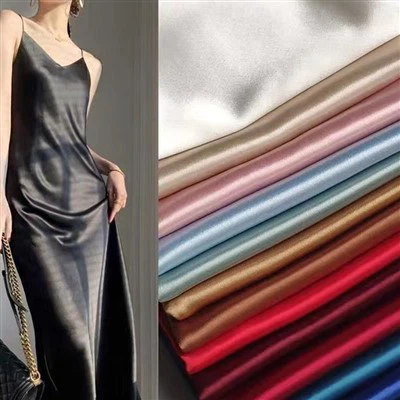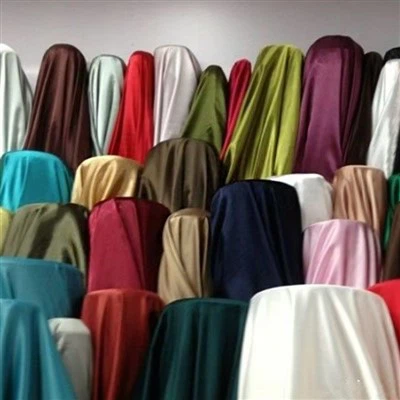As a seasoned supplier of Abaya fabric, I often encounter a variety of questions from customers about the diverse applications of our fabrics. One query that has recently piqued my interest is whether Abaya fabric can be used for making Abaya belts. In this blog post, I aim to delve into this topic, exploring the feasibility, advantages, and potential challenges of using Abaya fabric for crafting these stylish accessories.
Understanding Abaya Fabric
Before we can determine if Abaya fabric is suitable for belt-making, it's essential to understand what Abaya fabric is. Abaya fabrics come in a wide range of materials, including polyester, silk, cotton, and blends. Each material offers unique characteristics such as durability, softness, breathability, and drape.
Our company offers a diverse selection of Abaya fabrics, including the Four Way Stretch Polyester Spandex Garment Fabric, Polyester Taffeta Fabric, and Plain Dyed Pongee Pocket Fabric. These fabrics vary in texture, weight, and appearance, which are crucial factors to consider when using them for belt production.
Feasibility of Using Abaya Fabric for Abaya Belts
Material Compatibility
Many Abaya fabrics, especially those made from polyester blends, are highly suitable for belt-making. Polyester is known for its strength, wrinkle resistance, and colorfastness, which are essential qualities for a belt that will be worn and potentially adjusted frequently. The Four Way Stretch Polyester Spandex Garment Fabric offers the added advantage of stretch, allowing the belt to conform to the wearer's body comfortably.
Aesthetic Appeal
Abaya fabrics come in a plethora of colors, patterns, and textures, which can add a unique and stylish touch to Abaya belts. Whether you prefer a solid color for a classic look or a patterned fabric for a more contemporary style, there is an Abaya fabric to suit every taste. For instance, the Polyester Taffeta Fabric has a smooth, shiny finish that can create an elegant and sophisticated belt.
Cost-Effectiveness
Using Abaya fabric for belts can be a cost-effective option, especially if you are already purchasing the fabric for Abaya production. By utilizing leftover or scrap fabric, you can reduce waste and save on material costs. Additionally, since Abaya fabrics are often available in bulk, you can benefit from economies of scale when producing belts.
Advantages of Using Abaya Fabric for Abaya Belts
Customization
One of the significant advantages of using Abaya fabric for belts is the ability to customize the design. You can choose from a wide range of fabrics, colors, and patterns to create a belt that matches the specific Abaya or the wearer's personal style. This level of customization allows for the creation of unique and one-of-a-kind belts that stand out from the mass-produced options on the market.
Comfort
Abaya fabrics are designed to be worn comfortably for extended periods, and this characteristic translates well to belts. The softness and breathability of many Abaya fabrics ensure that the belt does not cause discomfort or irritation, even when worn for long hours. The stretchy nature of some fabrics, like the Four Way Stretch Polyester Spandex Garment Fabric, also provides a more comfortable fit.
Coordination
Using the same fabric for both the Abaya and the belt creates a cohesive and coordinated look. This harmony in design can enhance the overall aesthetic appeal of the outfit, making it look more polished and put-together.
Potential Challenges
Durability
While many Abaya fabrics are durable, some may not be as suitable for the wear and tear that a belt experiences. For example, lightweight or delicate fabrics may fray or tear more easily, especially if they are not properly finished or reinforced. It's important to choose a fabric with sufficient strength and durability for belt-making.
Thickness and Stiffness
The thickness and stiffness of the fabric can also affect its suitability for belts. Some Abaya fabrics may be too thin or too soft to hold their shape as a belt, while others may be too thick and rigid, making them uncomfortable to wear. Finding the right balance is crucial for creating a functional and comfortable belt.
Finishing
Proper finishing is essential for ensuring the longevity and appearance of the belt. This includes hemming, edge finishing, and attaching the belt buckle. Some Abaya fabrics may require special techniques or equipment for finishing, which can add to the production complexity and cost.
Tips for Using Abaya Fabric to Make Abaya Belts
Choose the Right Fabric
Based on the considerations mentioned above, select a fabric that is durable, has the right thickness and stiffness, and matches the desired aesthetic. Consider the type of Abaya the belt will be paired with and the intended use of the belt.
Reinforce the Edges
To prevent fraying and ensure the durability of the belt, reinforce the edges with a strong stitch or a binding tape. This will also give the belt a more professional and finished look.
Select the Appropriate Buckle
The buckle is an important component of the belt, as it not only secures the belt but also adds to its visual appeal. Choose a buckle that complements the fabric and the overall style of the belt.
Test the Design
Before mass-producing the belts, it's a good idea to create a sample belt to test the design, fit, and functionality. This will allow you to make any necessary adjustments and ensure that the final product meets your expectations.
Conclusion
In conclusion, Abaya fabric can indeed be used for making Abaya belts, offering numerous benefits such as customization, aesthetic appeal, and cost-effectiveness. However, it's important to carefully consider the fabric's characteristics, potential challenges, and follow the appropriate tips to ensure the success of the belt-making process.
If you are interested in exploring the use of our Abaya fabrics for belt production or have any other questions about our products, please feel free to contact us. We are here to assist you in finding the perfect fabric for your needs and to support you in your creative endeavors.


References
- Textile Industry Handbook: A Comprehensive Guide to Fabric Selection and Usage
- Fashion Design: Principles and Practices for Creating Unique Accessories






